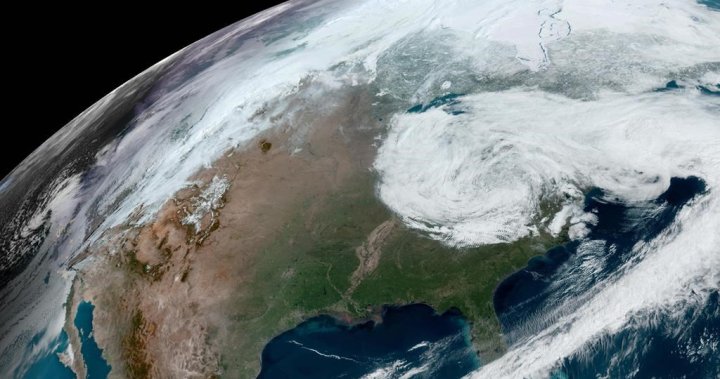Hundreds of post-secondary students in New Brunswick are patiently waiting for a call from Satellite Violet. The student-built project took more than five years to develop at campuses across the province and is not communicating as expected.
The satellite was delivered by a rocket to the International Space Station in early March and sent into Earth’s orbit on Apr. 18. Satellite Violet, named after the provincial flower, is the first New Brunswick-built satellite to be blasted into space.
While those long-distance calls continue to go unanswered, Troy Lavigne, one of the program’s project officers, said it’s not a “giant” surprise that the satellite hasn’t responded immediately.
“There’s a fairly complicated system in place for us to communicate with Violet,” he said.
The bread-loaf-sized satellite was a joint effort among more than 300 students and faculty at the University of New Brunswick, the Université de Moncton, and New Brunswick Community College as part of the larger Canadian CubeSat project, involving 15 educational institutions throughout the country creating satellites.
Lavigne said Violet’s isolated behaviour could be explained by its antennas not deploying yet. If that’s the case, a fishing wire that’s holding the antenna down is expected to melt in a few weeks.
“We selected that fishing line because we know it will degrade naturally after a couple of weeks in outer space…then we will be able to communicate with Violet,” he explained.
The project’s objective is to study and collect data surrounding the uppermost part of the earth’s atmosphere, known as the ionosphere, for between three months to two years.
Lavigne added that some identified issues at a newly built ground station in New Brunswick could have also played a role, which has since been resolved.
Breaking news from Canada and around the world
sent to your email, as it happens.
“We’ve received radio receptions from other satellites, so we’re working through the potential that we’re sending a command to Violet but we’re not able to pick (a response) up,” he said.
If the satellite’s radio silence hasn’t been caused by either scenario mentioned, there is one remaining option that could result in Violet finally transmitting information back to Earth — or provide an abrupt ending to its long-awaited trip into outer space.
Researchers hope Violet will deliver information about the ionsphere, where “ultraviolet light and x-ray solar radiation cause electrons to pop free of their atomic and molecular bonds leaving ions behind,” as noted in a UNB release.
Anna Mandin/Global News
“If the antenna is stowed, then (information) won’t transmit because it’s damaged,” Lavigne continued, adding that a secondary “transmit whether the antenna is deployed or not” command can be sent after a few more weeks of waiting.
“Although that could cause damage to Violet, that’s a risk we’re willing to take rather than not know if Violet’s ever able to respond. We’ll only do that after a few weeks have passed and we’ve decided it’s worth that risk.”
Despite the initial lack of communication thus far, Lavigne said his team is not giving up.
“Violet could’ve been damaged and may never respond. We’re hoping that’s not the case and we’re working through all those possibilities.”
Either way, he said the project will be considered an overwhelming success, as the goal was always to adequately prepare the next generation of space industry professionals for careers within the field.
Student remains hopeful
Samiha Lubaba, a master’s student at the University of New Brunswick, was recruited to the Violet team in August 2023 and is still assisting with the communication efforts on the ground.
Although everything appeared to respond accordingly when Violet was still within the team’s possession on Earth, Lubaba said troubleshooting is a more complicated process once the satellite is hovering above.
“There is so many things involved in the communication,” she said, adding that her team will continue trying despite not receiving the response that they were expecting.
Although the lack of communication is stressful, Lubaba said her team of researchers still has about “seven or eight” alternate solutions that could result in Violet transmitting the first bit of data that the ground station crew is so desperate to hear.
“I believe it will work,” she said. “Maybe it’s taking some time, but I’m not hopeless. Maybe it will take two weeks, three weeks, or more.”
If the Violet crew is able to overcome the communication dilemma and make contact with its orbiting friend, Lubaba said she will be very relieved.

— with files from Anna Mandin
© 2024 Global News, a division of Corus Entertainment Inc.





